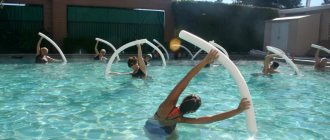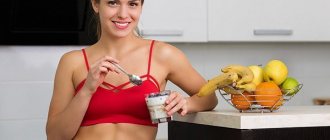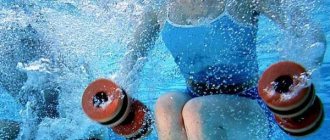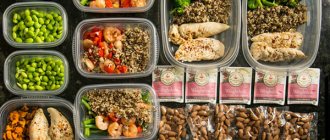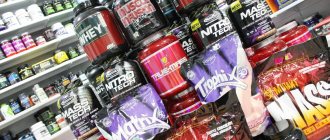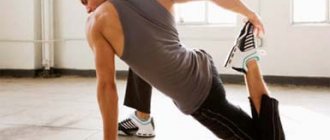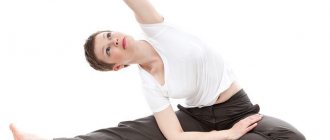December 4, 2021 Admin Home page » Important nutritional points
How to eat properly before and after visiting the pool to get rid of heaviness in the stomach. What to eat during morning and evening training.
Many, after a long swim, felt an increased feeling of hunger and despite the fact that it was winter outside, swimmers moved to the pool and continued doing what they loved, so how should you organize nutrition when swimming in the pool to achieve maximum results.
First, you should decide what your goal is: preparation for competitions or regular weight loss? For competitions you need to consume 4 grams. carbohydrates per 1 kg. weight, if the goal is weight loss, the proportion of carbohydrates must be reduced to 2 grams. per 1 kg. weight.
When splitting 1 g. 4 kcal of carbohydrates are released, i.e. for a girl in case of weight loss, weighing 60 kg. During the day you need to consume 120 grams. carbohydrates or 480 kcal. (120 g x 4 kcal), if we are talking about competitions, then the amount doubles to 240 g. carbohydrates or 960 kcal. (240 g. x 4 kcal.)
No matter the goal of preparing for a competition or losing weight, you must always remember that in case of severe hunger, there is a high probability of eating fast carbohydrates in the form of baked goods, confectionery or sweet soda. It is best to have cereal or other low glycemic index food on hand at this time.
Mistake #1: Didn’t make a certificate
For those who visit the pool regularly, a certificate is required. Without it, in many centers you are simply not allowed into the water. And it's not just about hygiene. Swimming has virtually no contraindications. But they should not be used by those who have serious heart problems, chronic diseases in the acute phase, skin diseases, or epilepsy. In these cases, consultation with a neurologist, therapist, orthopedist and other specialists is necessary. Read why you should go to the pool here.
FEEDING TIME BEFORE POOL CLASSES
The easiest way to organize proper nutrition when attending classes in water for babies under 6 months of age is before the introduction of the first complementary foods. For breast-fed infants and formula-fed infants, there is no question about choosing the main product in their sports diet. The basic rule is to feed your baby at least an hour before swimming in the pool. When feeding from a bottle, it is not recommended to prepare its full volume - it is better to limit yourself to 2/3 of the usual volume. It is very important to feed your baby after class, as children spend a lot of energy in the pool. For children under the age of 6-7 years who eat solid food, it is also necessary to maintain a pause of one hour between eating and starting exercise in the water. Older children can, if necessary, reduce the time between eating and starting training to 45-30 minutes. In this case, it is recommended to feed children easy-to-digest foods such as soft fruits, steamed vegetables, leafy greens, lean red meat, fish, and low-fat dairy products (soy or nut milk is even better). If a child eats candy bars, they should be protein, not grain. You can give your child oatmeal, unsalted nuts, bagels, and low-fat yogurt. This will give your child a constant supply of energy during swimming lessons. You should avoid eating large grains and breads, fatty foods. Foods high in fat will create difficulty in digesting and assimilating these foods, and will lead to the development of indigestion (dyspepsia) in the child. It is necessary to drink enough water to maintain optimal hydration before physical activity. While swimming, your child may become thirsty. You must have a bottle of water with you. Immediately after swimming, your child will also be thirsty and hungry, so they will also need a healthy snack (such as a banana or cereal bar).
Mistake #2: Not eating anything before training
Before going to the pool, like before any other workout, you need to eat. It should be something easy. The ideal option is fruits or berries. They will provide the body with “fast” energy. Porridge or any other “slow” carbohydrates are not the best option. They are only good for those who do not make sudden movements during training. Ideal formula: 1 banana and a handful of berries 40 minutes before visiting the pool.
Fats
Fats (lipids) should be present in every person's diet. After all, they are esters and participate in many processes along with proteins and carbohydrates. They are part of cells and are also an excellent source of energy.
Animal and vegetable fats saturate the body with essential amino acids, lecithin, cephalin, beneficial vitamins, tocopherols, and phosphatides.
Function of fats
- Saturate the body with beneficial acids;
- Increase muscle mass;
- Participate in the formation of new cells;
- Normalize hormonal balance;
- Increase cell elasticity;
- Causes a feeling of fullness;
- Prevents dryness, flaking of the skin, brittle nails;
- Take part in the processes of growth and development.
But this does not mean that all fats in our world are healthy.
Types of fats
1. Animals (fat of animals, birds). They are a source of saturated fatty acids. At room temperatures (with the exception of fish oil) they are in a solid state.
2. Vegetables . Liquid oils consisting predominantly of unsaturated, mono-polyunsaturated fatty acids. Contained in seeds, stems, and less commonly in other parts of oilseed plants.
3. Trans fats . They are a category of unsaturated fats. They are formed as a result of their processing.
Healthy fats
Healthy fats include:
- Monounsaturated fats (oleic acid, omega-9. Found mainly in plant foods);
- Polyunsaturated fats (omega-3, omega-6. They are not synthesized independently and are completely broken down in the body).
- Mono- and polyunsaturated lipids work together, providing the body with energy, maintaining normal metabolism, and the health of the epidermis, hair, and nails. They normalize digestive processes, reduce the concentration of bad cholesterol in the body, preventing the risk of developing systemic failures and cardiovascular pathologies.
Bad fats
Harmful fats include trans fats. They do not participate in the exchange of useful substances in the body.
Trans fats accumulate under the skin, on internal organs, and on the walls of blood vessels, causing functional and systemic failures and various pathologies.
What to eat before swimming training. Fats.
Thus, there is no need to give up fat. You need to understand which fats are good and which are not. If you figure this out, there won't be any problems.
Mistake #7: Don't take care of your hair
Chlorinated water is a hair killer. It destroys the structure and makes them brittle. Even two swims will be enough to ruin the quality of the strands. Be sure to take a hat with you. If you plan to wash your hair after training, apply nourishing oil or a moisturizing mask to the ends. We wrote about how to care for your hair in summer here.
Squirrels
In addition to containing carbohydrates, your pre-workout meal should also contain protein. This is necessary to maintain an anabolic state longer. Proteins taken before training are not energy for muscles, but a storehouse of useful amino acids that fuel working muscles.
The sources of these substances are animal and plant products. In order for protein elements to be fully absorbed by the body, it is necessary to consume them correctly.
Functions of proteins
Main functions of proteins:
- Construction;
- Transport;
- Protective;
- Regulatory;
- Motor;
- Energy;
- Catalytic.
Types of proteins
Egg white . This is the most correct protein that has a great effect on the body. This type of protein is best absorbed. But this does not mean that you should only use it.
Casein . A long-digesting type of protein that gradually provides the body with the necessary amino acids. The low rate of breakdown is not suitable for training. This type of protein should be consumed before bed. It will not affect sleep, the stomach will work slowly, but at the same time the muscles will recover better.
Whey protein . The fastest digesting protein. The breakdown of this protein occurs quickly, so within an hour a huge amount of amino acids are released into the blood. This type of protein is perfect to take after a workout.
Soy protein . Such substances have a balanced composition of important amino acids. After consuming such products, cholesterol levels decrease. The main disadvantage of soy proteins is the presence of an inhibitor of the digestive enzyme trypsin.
Isolate . This is a narrow-profile type of protein that is slowly broken down and broken down into amino acids.
What to eat before swimming training. Squirrels
From all of the above, it follows that we need proteins to saturate our muscles with amino acids. With the correct distribution of proteins, you can achieve maximum recovery of the body after training.
WHAT FOODS SHOULD BE AVOIDED BEFORE USE IN THE POOL?
Before training or a swimming lesson, a child should not be offered sweets, factory-made baked goods, fatty dairy products, refractory fats (cheeses), or fast food. Sugar-containing foods provide a quick burst of energy at the beginning of a workout, and then lead to a sharp depletion of energy, which can lead to poor health in a child during high loads. Check the contents of processed foods (cereals, bars) to make sure you haven't accidentally given your child an insidious portion of fast carbohydrates. Milkshakes, cottage cheese, cheese and other heavy dairy products may seem harmless. However, all these products take a long time and are difficult to digest. If a child eats them before class, he will experience the unpleasant sensation of a full stomach and the need to rest rather than exercise. Fast food contains a lot of fast carbohydrates, sugar and fats - a full range of food ingredients that are contraindicated not only before training, but also during everyday life.
Does swimming help you lose weight?
Of course, such a common sport as swimming in the pool helps in the fight against hated fat deposits. Of course, provided that all rules are followed.
As you know, in most cases, to swim in a pool, you must have certificates from a therapist and a dermatologist. Women will also be required to have a certificate from a gynecologist. To avoid unpleasant incidents, make sure that you do not fall into one of the following unacceptable categories:
How I lost half my weight in six months
- presence of skin diseases;
- venereal diseases;
- epilepsy;
- malignant formations;
- heart failure;
- hypertension;
- tuberculosis.
Swimming in a pool for weight loss is most effective if the water is cold, since in this case the body will work twice as hard to restore the temperature it needs.
If you decide to swim in the pool only in one style and do it very monotonously, the weight loss effect will hardly be noticeable. Therefore, try to change the variations and speed of this activity as often as possible.
popular:
- ✅ Effective Biocomplex formula helps get rid of food addiction
- ✅ Strange but effective weight loss methods used by celebrities
- ✅ Minus 24 kg without leaving home! A Muscovite who lost weight in quarantine “blew up” Russia with her recipe
Also, when swimming in a pool for weight loss, try to adhere to the following recommendations:
- before the main training program for weight loss, do a five-minute warm-up;
- the duration of each exercise should be equal in time;
- the break before each exercise should be no more than 15 seconds;
- upon completion of the training process, swim for 5-10 minutes in a relaxed manner.
People often complain about the low effectiveness of the technique. Rapid weight loss does not happen only because of incorrect exercises in the pool. Before you start swimming to lose weight, read more about the basic rules to avoid mistakes:
- Swimming should be done on an empty stomach;
- Dedicate about 80% of your training time to classes, the rest to rest;
- before warm-up exercises in water, warm up your body on land;
- It is recommended to practice in warm water; in case of cold water, swim only until your body begins to freeze;
- After each workout, it is recommended not to eat for 1.5-2 hours.
Benefit
Let's move on to the pleasant stuff and introduce you to the positive properties of the water procedure. The benefits of swimming in a pool for weight loss are as follows:
- relief from nervous tension and stress;
- stabilization of the cardiovascular system;
- strengthening all muscle groups of the body;
- strengthening the pelvic and shoulder joints and improving their mobility;
- help with arthritis;
- increased flexibility;
- improved blood circulation;
- reducing the likelihood of diabetes;
- effective fight against asthma attacks;
- regulation of proper breathing;
- lowering blood cholesterol levels;
- restoration of nerve cells;
- improvement of brain activity.
In addition to effective weight loss, swimming in the pool improves your mood and relieves obsessive depressive thoughts. On the other hand, this sport helps improve appetite and can lead those who want to lose weight to reverse the process.
An innovative drug for losing weight by 30-40 kg! Removes even age-related fat without chemicals, liposuction, diets or exercise. Exercises
Please note that to obtain the above “bonuses” for health and effective weight loss, ordinary swimming in the pool is not enough. It is necessary to develop a special training program. We will familiarize ourselves with the variety of exercises for the program in the next paragraph.
Training program
Before starting a pool training program for weight loss, let's look at the main types of swimming and the number of calories burned in one hour:
- breaststroke - 360;
- on the back - 480;
- freestyle - 600;
- butterfly - 900.
breaststroke may seem like one of the easiest types of exercise, due to the slowness of the action. But it is the most difficult because you need to swim on your chest. At this time, the hands should perform symmetrical movements parallel to the surface of the water.
Backstroke swimming for weight loss can only be done by experienced athletes, since this style involves risk, since you cannot see possible obstacles under water. Although, in the pool the risk is minimized. As for movements, alternate strokes with the arms and continuous raising and lowering of the legs should be observed. Freestyle , that is, free style, involves alternating the most comfortable swimming styles. In butterfly, the swimmer's arms make wide, powerful strokes, lifting the body under water, while the legs and pelvis perform wave-like movements.
Experts recommend visiting the pool for weight loss training no more than 2-3 times a week. Your training program might look like this:
How to avoid obesity and regain an erection at any age?
- Warm-up consisting of free style, with a frequency of each exercise of 10-30 seconds;
- Next, alternate breaststroke with freestyle and backstroke in the pool. It is necessary to do 4 approaches;
- We return to freestyle again, with a frequency of 20-30 seconds;
- We perform the breaststroke exercise, then - on the back, resting for 10-15 seconds;
- You need to complete your weight loss training program with a regular freestyle.
Dietary supplements for recovery after swimming
Also, many athletes resort to the use of dietary supplements.
These include protein, amino acids, BCA, gainer, vitamins and isotonic.
In our opinion, it is worth paying attention to isotonic and BCAA. Isotonic allows you to restore the minerals lost during training and return the water-salt balance in the body to normal.
BCAA contains essential amino acids: leucine, isoleucine and valine, which the body needs for recovery.
Gainer - quickly digestible carbohydrates that will help close the metabolic window.
Protein is a protein that will also help close the window.
It is worth considering that dietary supplements are not a meal replacement and should be used exclusively as a snack (this applies to protein and gainer).
Proper nutrition
Having chosen swimming in the pool as a workout for weight loss, do not forget that it will only be effective in combination with proper nutrition. When following a weight loss regime, the swimmer's food must be of high quality and contain many useful substances. Nutritionists recommend creating a proper balanced menu and strictly adhering to it throughout the diet:
- For breakfast , carbohydrate foods are offered, in the form of cereal with berries and fruits.
- have lunch with rice, buckwheat porridge, chicken and lean fish - pollock, cod, tuna.
- For dinner
, eat low-fat cottage cheese, kefir and low-fat fish cutlets.
When training to lose weight, do not neglect products containing calcium, magnesium and iron, since the chlorine contained in the pool water washes these beneficial substances from the body, which immediately affects the condition of a person’s skin, hair and nails.
